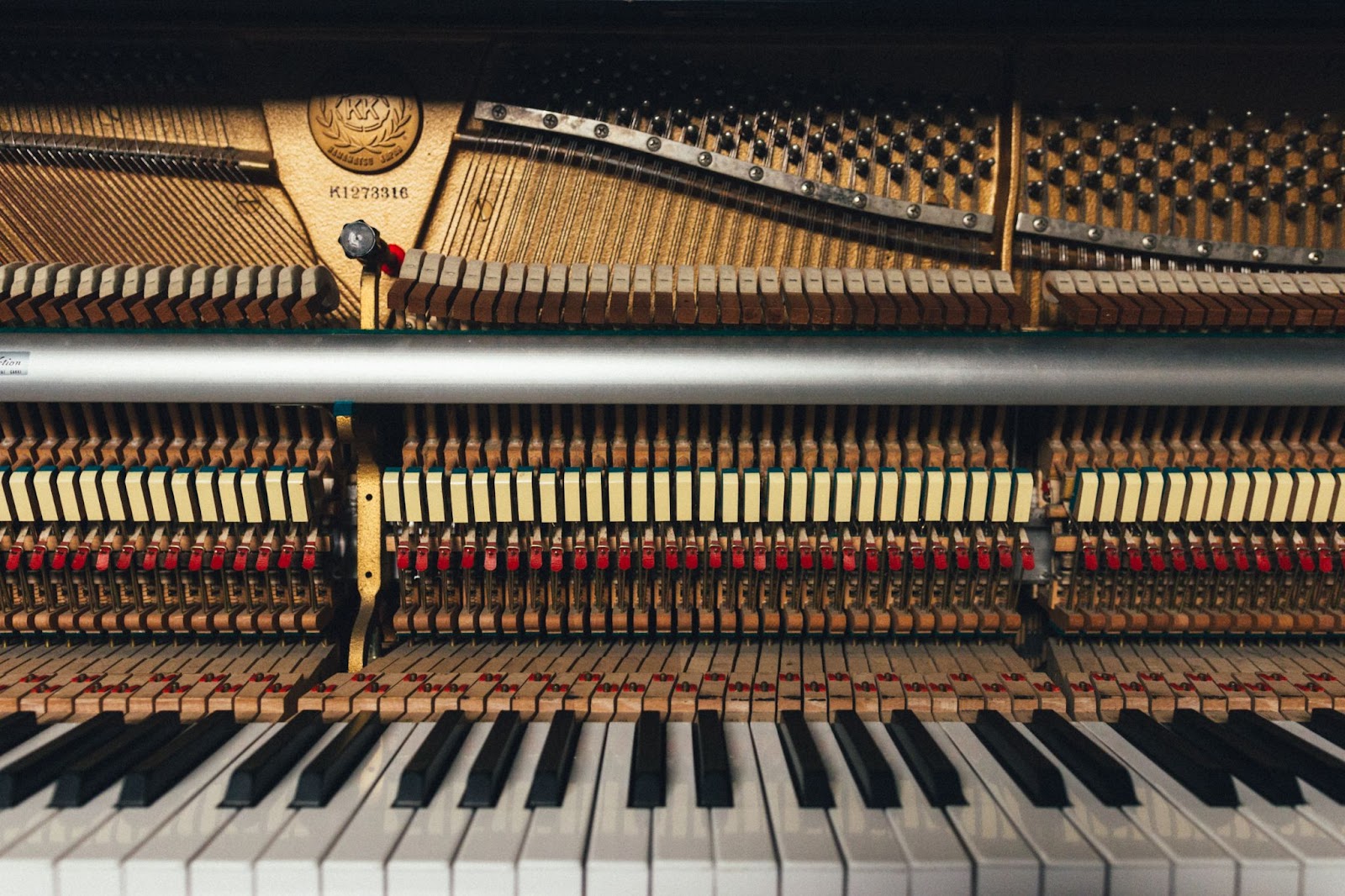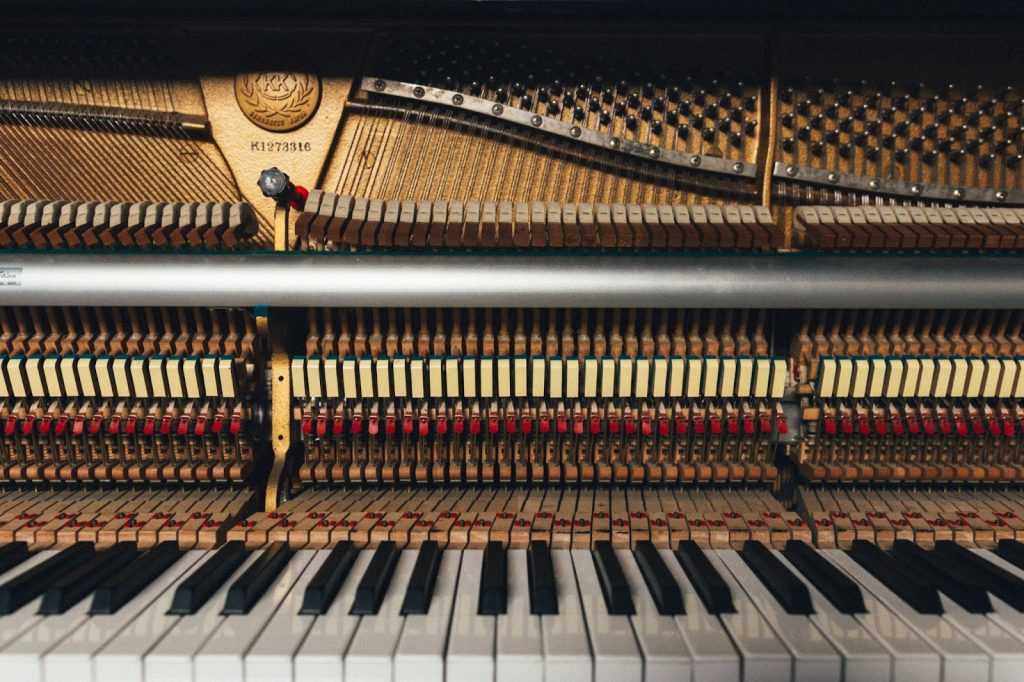
According to Wikipedia.com, piano tuning is defined as:
“The act of adjusting the tension of the strings of an acoustic piano so that the musical intervals between strings are in tune. “(Wiki/Piano Tuning) But this is no easy task.
“Fine piano tuning requires an assessment of the vibration interaction among notes, which is different for every piano, thus in practice requiring slightly different pitches from any theoretical standard.”(Wiki/Piano Tuning)
So wether you have a baby grand, or a smaller upright, within the first year of getting an acoustic piano, you will need to have your piano tune. This article is a short guide to everything related to piano tuning: How much it costs, how it works, and even how to learn to become a piano tuner yourself. Let’s go!
Professional Piano Tuning Cost
Pro piano tuning costs anywhere for $90-$200. Luckily, your average acoustic piano will only need tuned once every year. But you’re probably wondering…
Why does tuning pianos cost so much?!
- Piano tuning is time consuming
- There are several strings for each note inside the piano
- Piano tuning requires special skills- Not just any musician can do it
Unlike some of the oddball pianos of old, modern acoustic pianos all have several strings per individual note. This feature makes the pianos sound full, because of the very minor differences between the pitches of each strings. But if those minor differences become big ones…Your instrument will sound more like it belongs in a horror film than a stage or recording studio. This is the main reason why piano tuning is so time consuming. Most pianos have about 230 strings inside.
How is a Piano Tuned?
A not-so-distant relative of the piano are instruments in the hammer dulcimer family. These instruments have many strings, and look like a small trapezoidal harp than anything else. A peek at this instrument will give you a good idea how piano tuning works.
Like pianos, hammer dulcimers also need a tuning key.Tuning keys fit over a metal nut. After the tool is placed, the key can be turned in either direction to tighten the string, or to loosen the string. Tightening the string raises the pitch (makes it sharper) whereas loosening the string makes it lower (flatter).
This would also be a good moment to check out the cover photo from this article. It is easier to understand what is going after you’ve seen how its ancestor is tuned

Rather than being called nuts, the objects that are turned and tightened on a piano are called piano pins. Another term for a piano tuning key is a piano tuning wrench.
You can take a look at this piano tuning kit from Amazon to get a better idea of what tools are used in the process of piano tuning.
The above kit has an instructional guide, along with a gooseneck piano tuning wrench, a temperament strip, and rubber mutes.
Training to Become a Piano Tuner
Piano tuners need:
- A tool kit ($80+)
- A piano tuning license
- A small business
While you don’t need perfect pitch to become a piano tuner, it’s a great skill to have if you do happen to be blessed with such astute ears. Piano tuners are also typically trained in repairs, so you will need to learn much more than simply tuning the strings. Be prepared to learn how to check for cracks in the wood, as well as replace small moving parts.
The Piano Technicians Guild has created a standard for becoming a piano technician. According to the site, in order to become a registered piano technician (RPT), you will need to pass a series of exams. According to the page, “Two separate practical, hands-on exams test tuning and technical skills.” You aren’t allowed to use a tuner during the exam, either!
“Candidates who use electronic tuning devices in their work must nevertheless demonstrate their ability to tune by ear, unaided by electronics.” This trade is no walk in the park, for sure.
If you are performing services like this, you are technically an independent contractor, so you should register your business. So, If you don’t do this (and pay your taxes, of course!) you might not be tuning pianos for very long at all. Also, this niche career is for you, take your time, and do it the right way.
One big ‘pro’ of being a piano tuner is that there will likely always be acoustic pianos out there, and every year or so, they will need tuned. Talk about job security! That being said, learning how to tune the piano is a very serious trade. You’ve often heard me talk about how different each digital and hybrid is from one another- Even in its build and electronics, from model to model, with instruments created by the same company.
You will need to get to know each and every piano you come across.
How Often Does My Piano Need Tuned?
Your typical piano will need once a year for the average player. But if your entire career is performance-based, you will likely need to have it tuned more often. And, according to Yamaha’s site, your instrument will also need more tuning within the first year (if you are buying it new):
“Piano strings stretch a great deal during the first year after purchase, and the piano should be tuned twice during this one-year period.” (Yamaha / Care and Maintenance). Other than that, as a general rule, schedule maintenance for your instrument once every year.
How Often Do Pianos Need Restrung?
You’re probably wondering, if guitars need retuned and restrung, they how often do pianos need new strings?
Yet again, the hammer dulcimer and piano share this in common:These instruments don’t need restrung every year. And pianos in particular don’t need restung until upwards of 30 years. You should only redo the strings if they are damaged with rust.
Restringing a piano is much more expensive than having it tuned. Restringing an entire instrument will set you back several thousand dollar (Up to $4,000 or so!). Luckily, this is a pretty infrequent service. But if you are inheriting or purchasing an old piano that needs some love, keep in mind that it may be a much bigger investment than at first glance.
Piano Tuning: Conclusion
If ownining an acoustic piano sounds like too big of a commitment for you right now, be sure to check out our list of top digital pianos:
But if a grand or upright (acoustic) is for you, I wish you luck on your piano tuning journey- You’ve got this! And be sure to come back to this maintenance blog for more information about everything piano care!





